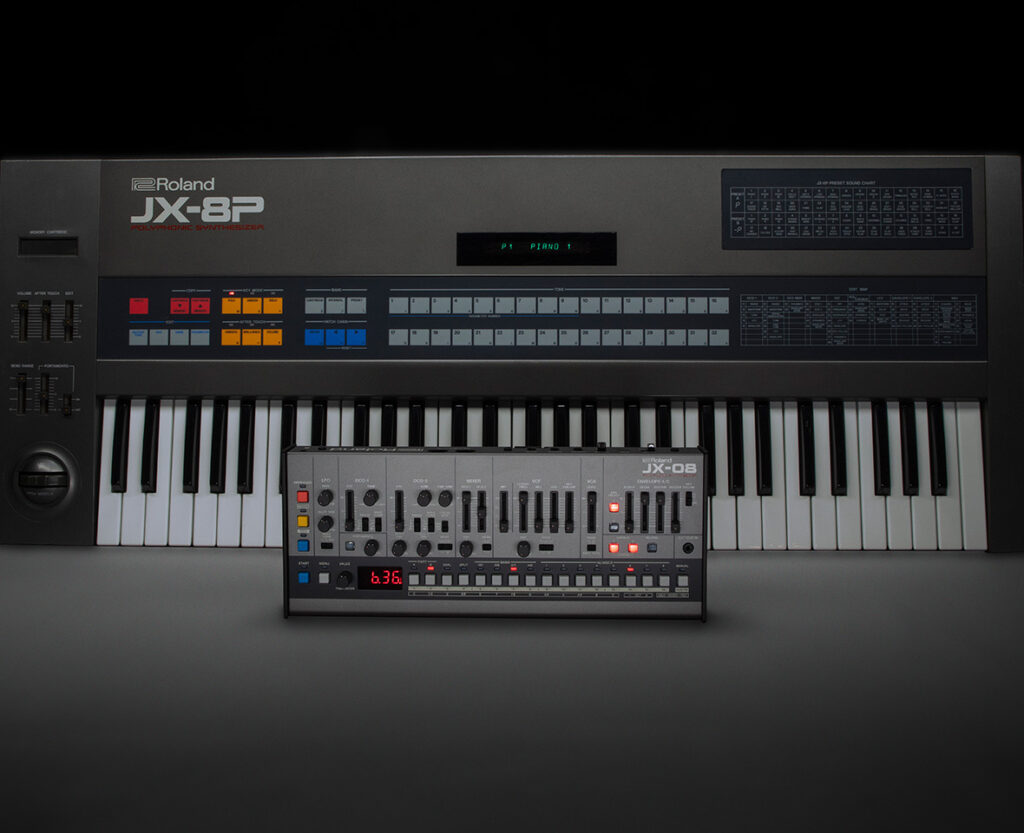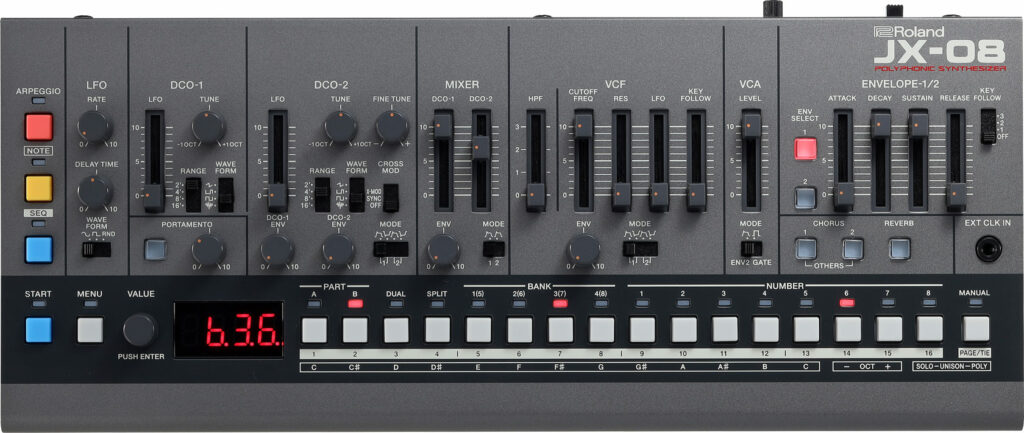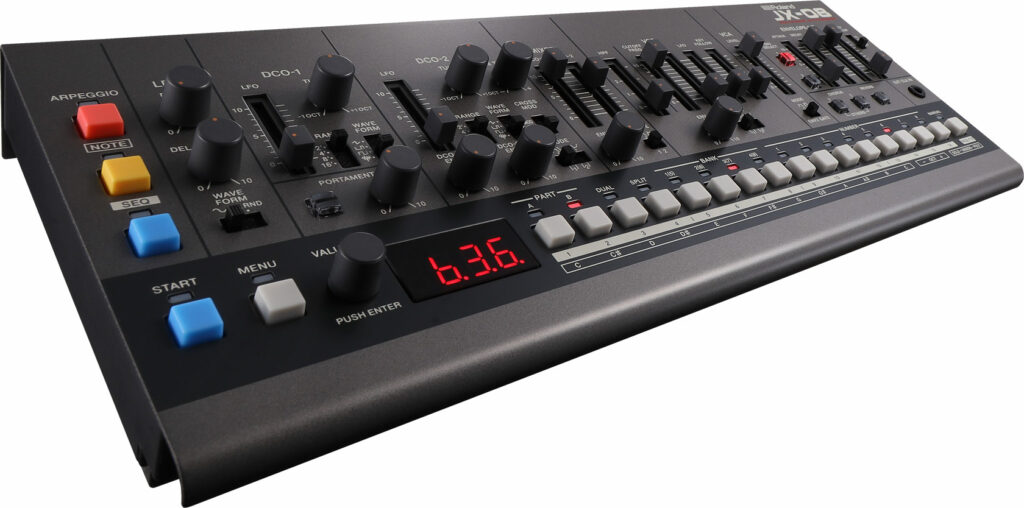Roland draw on another gem from their extensive back catalogue for the latest Boutique release. Greg Scarth discovers what this vintage reboot has to offer.

One of the intriguing things about Roland’s impressive back catalogue of instruments is that you can often fine more than one classic in any given product range. For most manufacturers, bigger is better: pick a model higher up the range and it’ll do everything the lesser models can, plus more. That wasn’t always the case for Roland. Put the earlier TR-808 against its successor, the 909, for instance, and you’ll find two quite different flavours of drum machine; it isn’t just a case of the newer or more expensive model being ‘better’.
The new Roland Boutique JX-08 is based on the JX-8P, a huge keyboard released in 1985. You’d be forgiven for assuming that the JX-8P was just a bigger version of the JX-3P, which already got rebooted courtesy of the Boutique JX-03 back in the very first wave of Boutique releases in 2015. The JX series isn’t the most well known in Roland’s history, but it was a bit of a last hurrah for Roland’s analogue output, lasting from the release of the JX-3P in 1983 to the discontinuation of the JX-10 in 1989.

In sonic terms, the JX-8P and the larger JX-10 were always a bit more refined than their little brother – or even the Juno range which ran alongside the JXs for most of the 80s – which had a more raw vintage tone. The 8P benefited from features like pulse width modulation and two types of built-in analogue chorus which hinted at its prowess on subtle, classy pads with a high-end sheen. The JX-08 immediately brings back a certain 80s nostalgia, with that silky sound coming to the fore as soon as you hold down a chord. It can happily do bass and leads too, without quite matching the in-your-face punchiness of the JX-03 but certainly holding its own in terms of organic character.

Arguably the biggest weakness of the original JX models was the interface used to edit and program them. As a JX-3P owner, I can personally vouch for the fact that the original JX synths aren’t particularly user-friendly in terms of programming and editing sounds. Part of Roland’s cost-cutting efforts for the JX series involved the use of a ’parameter access’ approach to editing, by which you punched a button to select a parameter and then adjusted it using a separate slider. The upshot of this was that money was saved on electrical components, but editing the synth became a fiddly, laborious process of punching in parameters rather than instinctively reaching for dedicated controls. It comes as no surprise that Roland have abandoned the concept entirely for the JX-08, and editing is a simple question of dedicated controls for most of the key parameters.

Much like the new Boutique JD-08, the JX-08 features what we could see as a next-generation version of Roland’s formula for the Boutique models. Most notably, there’s an excellent polyphonic sequencer (the JX-08 features up to 20 voice polyphony, a major upgrade on the six voices of the original JX-8P). You’ll also find new effects including a recreation of the famous Juno chorus. The inclusion of a front panel clock input is a really nice touch, allowing you to clock the sequencer using a trigger input rather than simply running it via MIDI sync. That might not sound like a big deal, but sending an irregular clock pattern to the sequencer is a classic trick on old Roland synths such as the SH-101, allowing you to manipulate the playback of the sequence in real time depending on the clock signal you send to it.
The Boutique JX-03 is still a very good synth, but the JX-08 really shows how far the boutique range has come in a little over six years: bigger polyphony, better sequencer, more effects and more creative sync options. It’s a cracking synth which does what the Boutique range does best, bringing a vintage classic up to date and opening up its creative potential at a very reasonable price point.
Greg Scarth
More info/buy